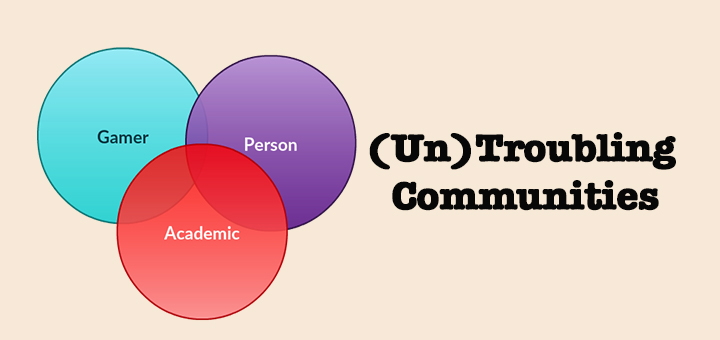We have done many game reviews here at NYMG, but this is the first book review. I felt compelled to write this review after reading Balsamo’s book. To give you an anecdotal idea of how much I liked it, I sat down with a cup of coffee Saturday morning and barely moved until I finished the book that night. And this very rarely happens to me (with nonfiction at least). But what’s even more telling is that I have a renewed enthusiasm for my work. Balsamo articulates something in this book that I have been struggling for years to articulate, something my work always centers around: the importance of the connections between and interrelatedness of technology and culture.
Now, there are affordances to defining what we do here at NYMG cultural rhetoric. We get to be part of a larger discussion, and feminist methodology, the backbone of some cultural rhetoric work, is very much in line with my beliefs as a researcher. But putting together all the elements of cultural studies does eliminate some of the specificity of what we are able to do, particularly because women have a particular relationship with technology. So do each racial, ethnic, socio-economic, and class group out there. So we lose the ability to respond to the situatedness and specificity of situations but gain a lens that helps to bring together groups who have overlapping methodologies. Strength in numbers. This is the pro and the con of connecting feminist technoscience to cultural studies, in my view. Balsamo, however, has convinced me that it is worth it.
So back to Balsamo. Balsamo defines culture as “a socially shard symbolic system of signs and meanings” (5). Ok, so a pretty simple (or not simple at all) definition. But then she starts showing just how important this definition is: “Through the practices of designing, cultural beliefs are materialistically reproduced, identities are established, and social relations are codified. Culture is both a resource for, and an outcome of, the designing process” (11). So culture becomes a cycle of creating material and interpreting it. Before you go all OOO, she does discuss the importance of agency and of the human in this as well. She is very careful to avoid technological determinism.
What are the material effects of this distinction? Balsamo covers that too. She writes, “My intent is to participate consciously in the act of designing technoculture in ways that are ethically and socially responsible “ (49). What I love about her perspective, which is one that I am also taking in my dissertation, is that she thinks culture, ethics, and social responsibility are integral parts of studying technology. I agree. I think we can’t productively study the complexity of technology without acknowledging the material, social, ethical, and cultural conditions that exist behind and because of the technology.
For scholars, her call is simple: “We need new ways of thinking about technology, culture, education, and the multidisciplinary practices of cultural reproduction that take form as a media rich documentaries, public interactive, creative pedagogy’s, digital scholarship, and new technologies of imagination” (197). This is why the work we do here at NYMG is so important. It’s important to me, but I think it’s also important if we are to make theories of technology something we, as rhetoricians, can use and influence productively.




